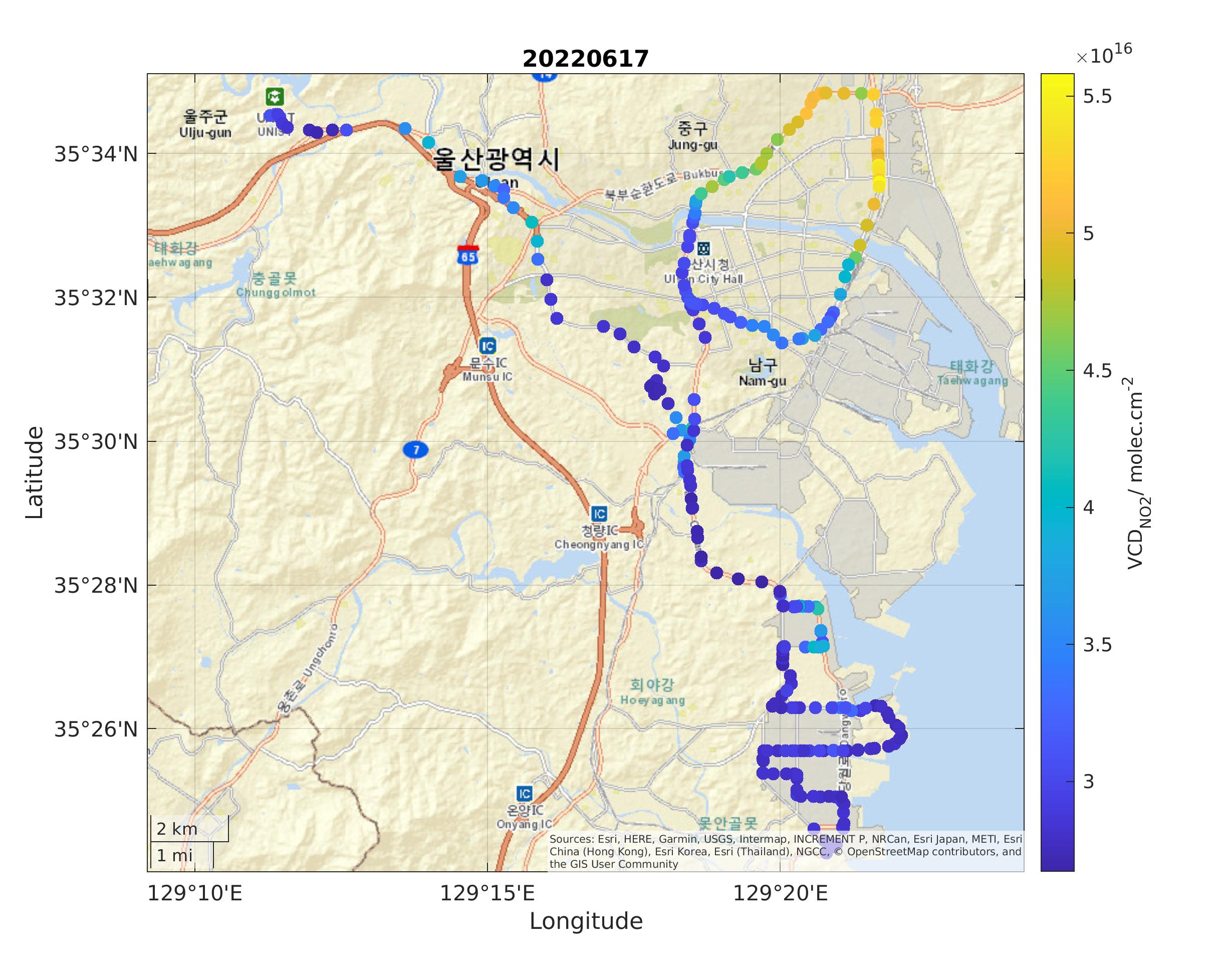|
~
|
The Geostationary Environmental Monitoring Spectrometer (GEMS) was launched into space by the National Institute of Environmental Research (NIER) and the Ministry of Environment of Korea, on board the GEO-KOMPSAT 2B satellite in 2019. GEMS is one of three air quality monitoring missions over the Asian continent. To validate the measurements from this instrument, two ground based campaigns have been organized so far: SIJAQ/GMAP in 2021 and SIJAQ 2022 this year. The UV-VIS/DOAS group from BIRA-ISAB participated alongside five involved South Korean institutes (NIER, UNIST, PNU, SNU, and YSU) and two other European institutes (DOAS group from University Bremen, Satellite Remote Sensing group of Max Planck Institute for Chemistry) in both of these campaigns. 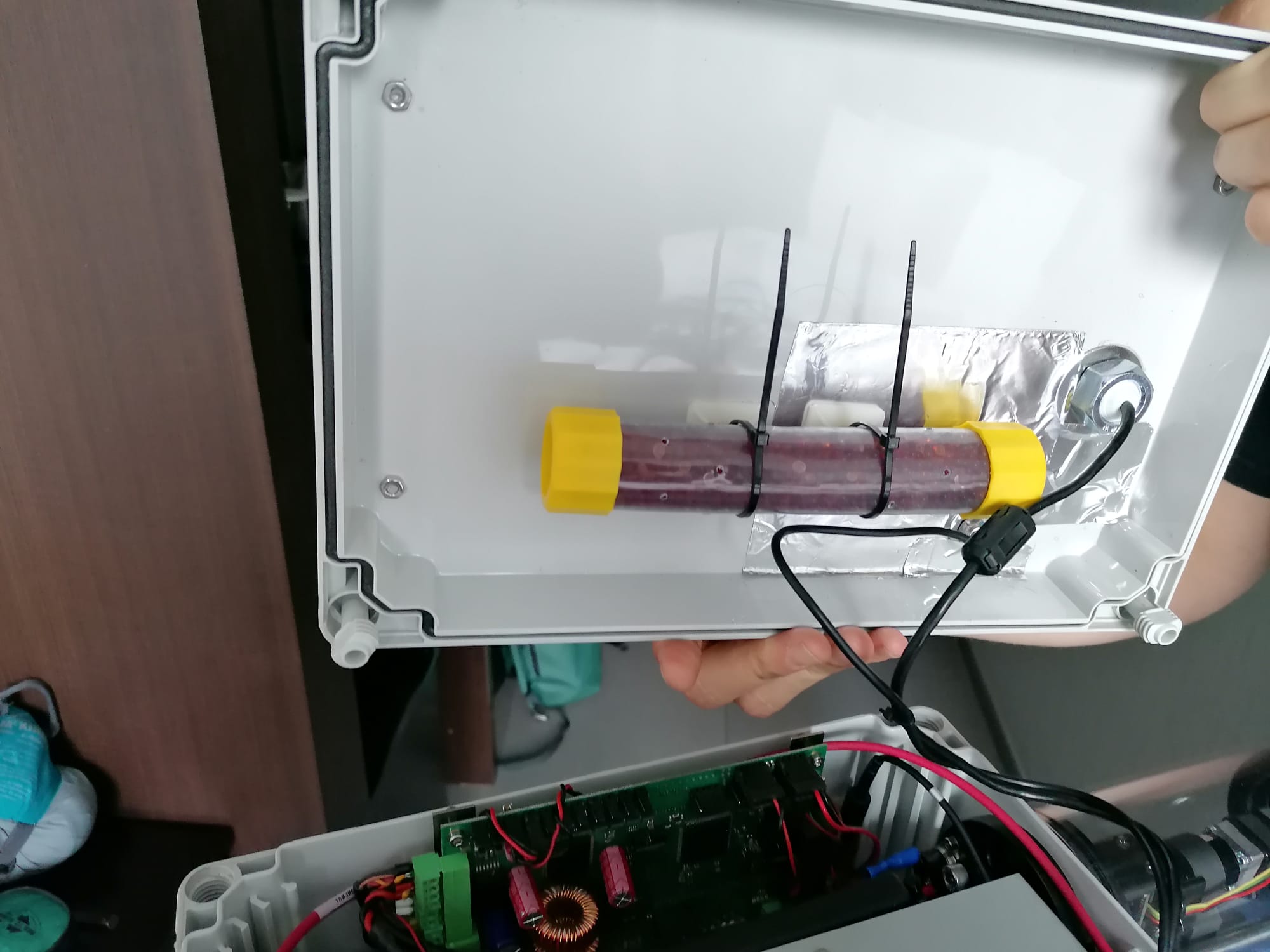
The main aim of these campaigns is the validation of GEMS data with fiducial reference measurements, specifically of trace gas vertical columns (VCD), such as nitrogen dioxide (NO2) and formaldehyde (HCHO). While the first campaign concentrated mostly on NO2 and other gases mostly produced by anthropocentric sources, this year's campaign's focus shifted slightly towards HCHO. This implicated among other things a shift in location, from the Seoul Metropolitan Area towards the south east of the country, in the case of the BIRA-IASB instrument, to Daegu. This year's BIRA-IASB's team consisted of Ermioni Dimitropoulou and Martina M. Friedrich. Their main objective was to perform the above mentioned re-location of the BIRA-IASB instrument (an Airyx Skyspec passive remote sensing instrument, Skyspec hereafter), perform maintenance work on it and to participate in mobile car DOAS measurements with a small custom build mobile DOAS (mainly consisting of a one-channel Avantes spectrometer, and a GPS sensor, hereafter called mobile DOAS) in the Ulsan area. While the main period of the SIJAQ 2022 Campaign ranges from May to end of August 2022, the BIRA-IASB team was physically present in South Korea from June 5th to June 21st. After arrival in South Korea, the first step was to pick-up the mobile DOAS from NIER and to demount the Skyspec from its GMAP location at Korea University in the centre of Seoul. The maintenance work consisted of exchanging the silicate pellet tube inside the instrument (it is there to prevent condensation inside the instrument, see Fig.1) and exchanging the air filter in-front of the fan (it is there to prevent dust from entering the instrument, see Fig. 2) which had been found to be damaged. Both the mobile DOAS and the Skyspec were tested in the hotel room (see Fig. 3) before re-installing the Skyspec at its new location in Daegu (on the roof of a government building) and installing the mobile DOAS in a car to perform mobile measurements in Ulsan. Once in Daegu, it was important to find a pointing direction of the instrument with a reasonably free few towards the horizon and to ensure good horizontal orientation (see Fig. 4). To transmit the measured data to an ftp server at BIRA-ISAB for further processing, an internet connection is necessary. This was established using a mobile router. This, together with the power supply of the instrument was stored in a water tight box placed next to the instrument. In order to prevent heating of this box due to solar radiation, a sun screen for the box was build and mounted on top of it (see Fig. 5). On June 16th and 17th, mobile measurements in the Ulsan region were performed with the BIRA-IASB mobile DOAS as well as with a mobile instrument from the University of Bremen, both measuring together from the same car. The car trip started from the UNIST campus in Ulsan for both days, following a South direction. The primary motivation behind the route planning was to focus on trace gases produced by petrochemical industries, such as NO2, SO2, and HCHO. During the second day of mobile DOAS measurements, the focus was broader, and also included emissions from other anthropocentric activities. As can be seen in Fig.6, after heading to the South, a loop in the city center of Ulsan was performed. During this day, higher NO2 VCDs are observed in the Northeast part of the city center. Unfortunately, due to an instrument failure of the Skyspec, only 1 week of data could be measured until today. The instrument was demounted and checked in a lab. After it performed without any problems for two days in the lab, it was re-installed on July 15th by our Korean colleagues from UNIST on top of the roof of one of their campus buildings to offer easier access in case of a new failure. Luckily, another big contribution of BIRA-IASB to the campaigns, is the automated data processing of measurement data via the processing chain of FRM4DOAS; this is performed not only for the BIRA-IASB Skyspec, but also for the instruments of the other two European teams and eventually also for the MAX-DOAS measurements from the Korean partners. 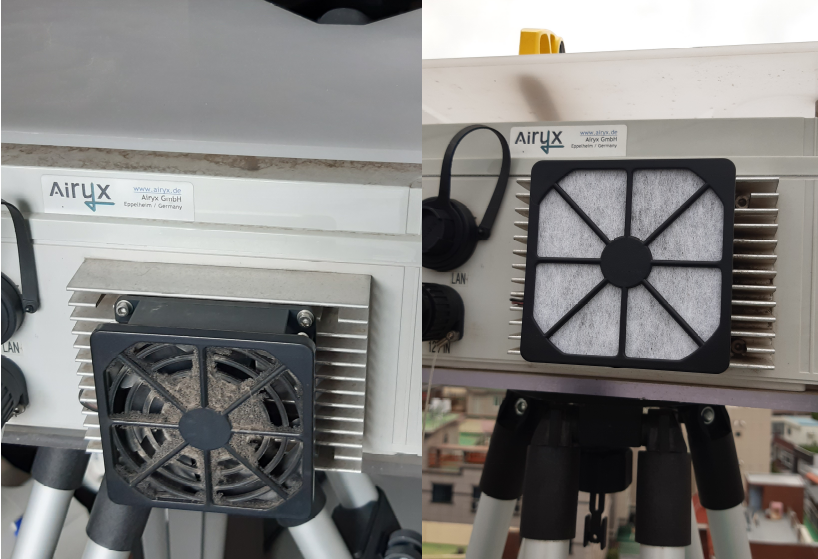
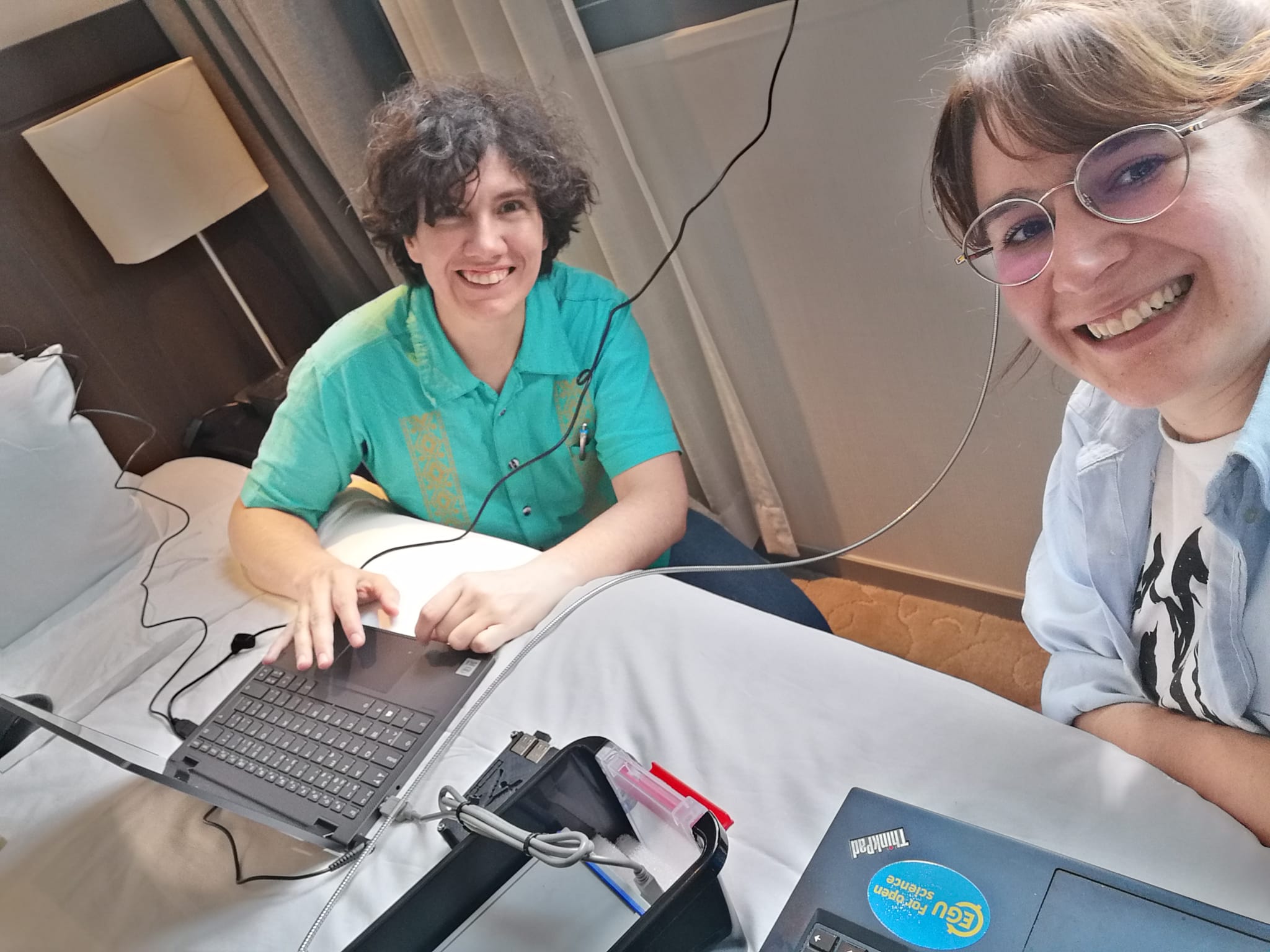
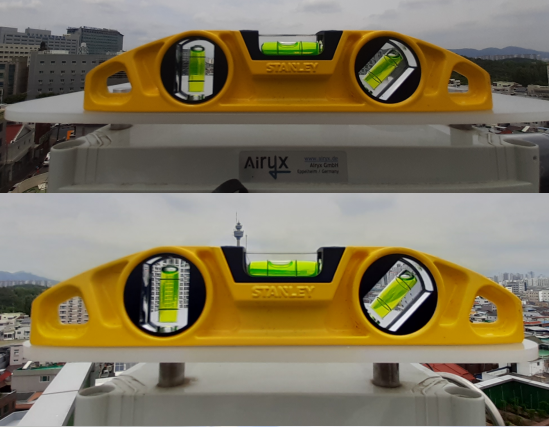
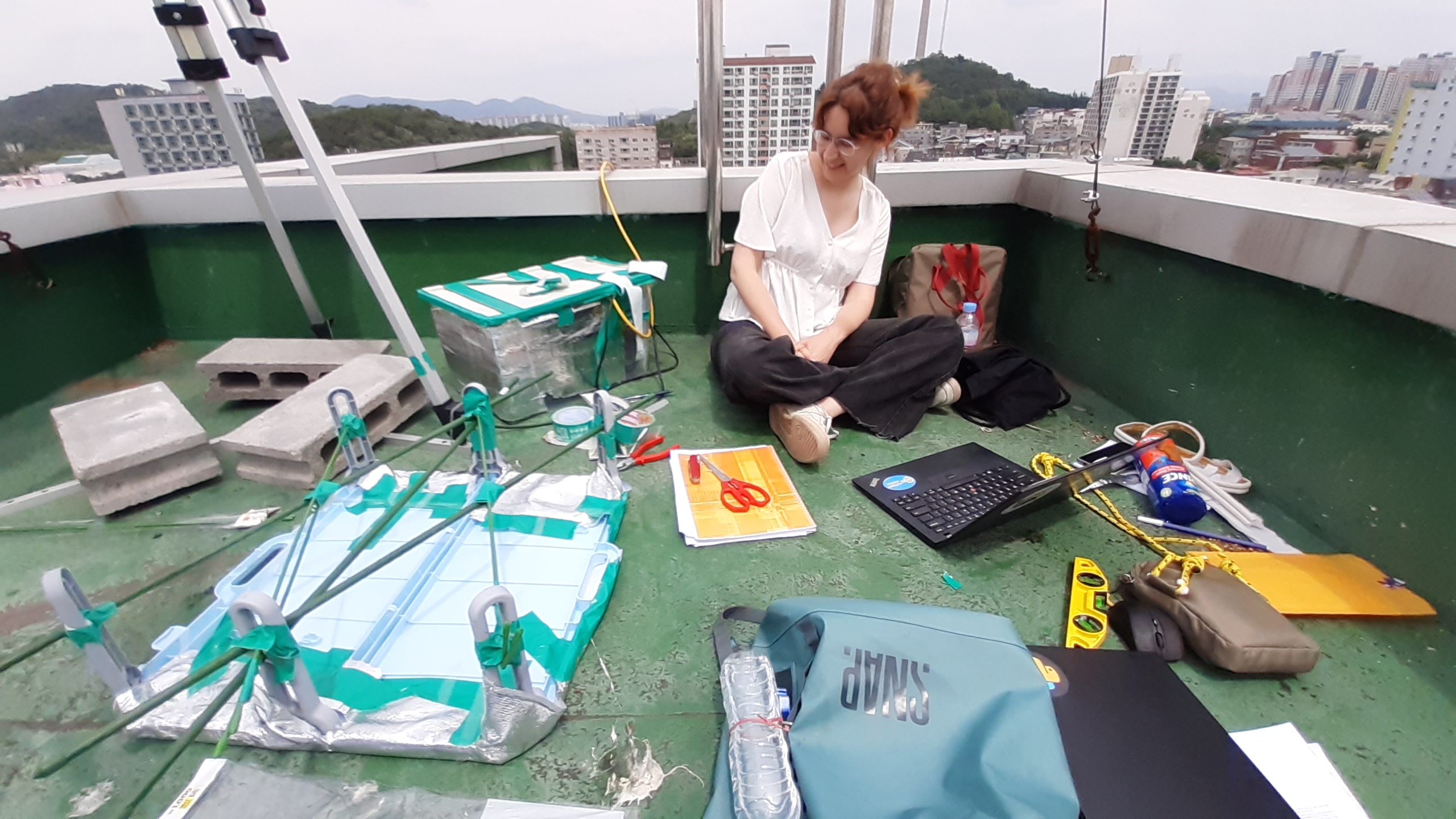
Links
Share this article |



